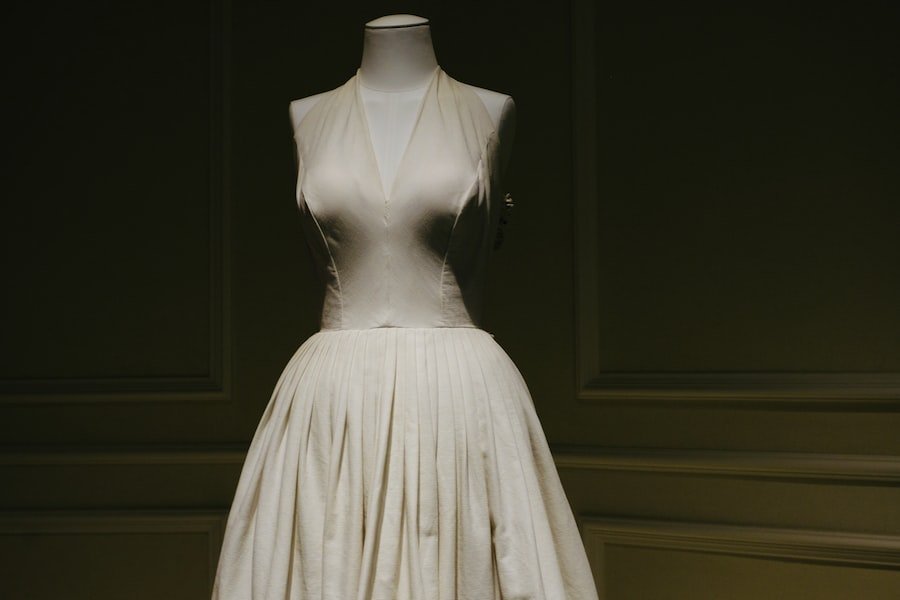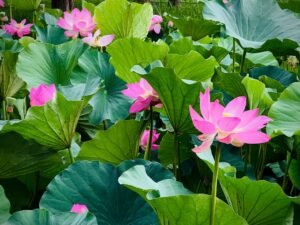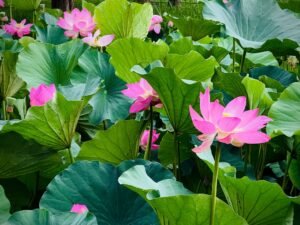

Fashionable English Vocabulary: Clothing and Accessories
Learning fashionable English vocabulary for clothing and accessories is essential for English learners who want to navigate social and professional settings with confidence. Clothing and accessories are not only functional items but also a form of self-expression and personal style. By expanding their vocabulary in this area, English learners can better describe their own clothing choices, understand fashion trends, and engage in conversations about style.
In social settings, knowing fashionable English vocabulary can help learners make a good impression and connect with others who share similar interests. Being able to discuss clothing and accessories allows individuals to bond over shared fashion preferences or seek advice on where to find certain items. In professional settings, having a strong vocabulary in this area can be beneficial for those working in industries such as fashion, retail, or marketing. It shows a level of professionalism and understanding of the industry, which can be valuable when communicating with colleagues or clients.
Table of Contents
ToggleEssential Clothing Vocabulary for English Learners
To start building fashionable English vocabulary, it is important to learn the basic clothing items such as shirts, pants, and dresses. This includes understanding the different styles and cuts of these items, such as long-sleeved shirts, skinny jeans, or maxi dresses. Additionally, learners should familiarize themselves with vocabulary related to sizes, materials, and styles. This includes words like small, medium, large, cotton, silk, and trendy.
In addition to the basic clothing items, learners should also learn common phrases for describing clothing. This includes phrases like “It fits well,” “It looks good on you,” or “It’s too tight.” These phrases are useful when trying on clothes or giving feedback on someone else’s outfit. By mastering these essential clothing vocabulary words and phrases, learners will have a solid foundation for discussing clothing in English.
Vocabulary for Different Types of Clothing: Formal, Casual, and Sportswear
Fashionable English vocabulary extends beyond basic clothing items to include vocabulary for different types of clothing. This includes formal clothing such as suits and dresses, casual clothing such as jeans and t-shirts, and sportswear such as athletic shorts and sneakers.
For formal clothing, learners should familiarize themselves with words like suit, tie, dress, gown, and blazer. They should also learn the different types of formal wear for men and women, such as tuxedos and cocktail dresses. This vocabulary is useful for occasions like weddings, job interviews, or formal events.
For casual clothing, learners should learn words like jeans, t-shirts, hoodies, and sneakers. They should also learn the different styles of casual wear, such as streetwear or athleisure. This vocabulary is useful for everyday conversations about clothing choices or when discussing fashion trends.
For sportswear, learners should learn words like athletic shorts, leggings, tank tops, and sneakers. They should also learn the different types of sportswear for specific activities, such as running shoes or basketball jerseys. This vocabulary is useful for those who are active or interested in sports.
Fashionable Accessories Vocabulary: Jewelry, Hats, and Scarves
In addition to clothing vocabulary, learners should also expand their knowledge of fashionable English vocabulary for accessories. This includes vocabulary for different types of jewelry such as necklaces and earrings, hats such as baseball caps and fedoras, and scarves such as silk scarves and infinity scarves.
For jewelry vocabulary, learners should learn words like necklace, bracelet, ring, and earrings. They should also learn the different types of jewelry materials, such as gold or silver. This vocabulary is useful when discussing personal style or when shopping for jewelry.
For hat vocabulary, learners should learn words like baseball cap, fedora, beanie, and sun hat. They should also learn the different styles of hats for different occasions or seasons. This vocabulary is useful for protecting oneself from the sun or adding a stylish accessory to an outfit.
For scarf vocabulary, learners should learn words like silk scarf, infinity scarf, pashmina, and wool scarf. They should also learn the different ways to wear a scarf, such as as a headscarf or as a shawl. This vocabulary is useful for adding a fashionable touch to an outfit or staying warm in colder weather.
Vocabulary for Footwear: Shoes, Boots, and Sandals
Footwear is an important part of any outfit, and learners should expand their fashionable English vocabulary to include words for different types of shoes, boots, and sandals. This includes vocabulary for different types of shoes such as sneakers and loafers, boots such as ankle boots and knee-high boots, and sandals such as flip-flops and gladiator sandals.
For shoe vocabulary, learners should learn words like sneakers, loafers, heels, and flats. They should also learn the different styles of shoes for different occasions or activities. This vocabulary is useful when discussing footwear preferences or when shopping for shoes.
For boot vocabulary, learners should learn words like ankle boots, knee-high boots, rain boots, and cowboy boots. They should also learn the different materials used for boots, such as leather or suede. This vocabulary is useful for staying stylish and comfortable in colder weather or when engaging in outdoor activities.
For sandal vocabulary, learners should learn words like flip-flops, gladiator sandals, slides, and wedges. They should also learn the different styles of sandals for different occasions or seasons. This vocabulary is useful for staying cool and comfortable in warmer weather or when going to the beach.
Describing Clothing and Accessories: Adjectives and Phrases

To effectively communicate about clothing and accessories in English, learners should also expand their vocabulary to include adjectives and phrases for describing these items. This includes adjectives for describing clothing such as comfortable and stylish, as well as phrases for describing clothing such as “fits well” and “looks good on you.”
Adjectives are useful for expressing personal preferences or opinions about clothing. For example, learners can use adjectives like trendy, fashionable, or elegant to describe clothing they like. They can also use adjectives like comfortable, loose-fitting, or tight-fitting to describe how clothing feels on the body.
Phrases are useful for giving feedback on someone else’s outfit or when trying on clothes in a store. For example, learners can say “That dress looks good on you” or “These pants are too long.” They can also ask for advice by saying “Do you think this shirt fits well?” or “What do you think of this necklace?”
By expanding their vocabulary to include adjectives and phrases for describing clothing and accessories, learners can effectively communicate their preferences and opinions in English.
Vocabulary for Colors, Patterns, and Textures in Clothing
In addition to learning vocabulary for different types of clothing and accessories, learners should also expand their fashionable English vocabulary to include words for colors, patterns, and textures in clothing.
For color vocabulary, learners should learn words for different colors such as red, blue, green, and yellow. They should also learn words for shades of colors such as light blue or dark green. This vocabulary is useful when discussing personal style or when shopping for clothes.
For pattern vocabulary, learners should learn words for different patterns such as stripes, polka dots, floral prints, and plaid. They should also learn words for specific patterns such as houndstooth or paisley. This vocabulary is useful when discussing fashion trends or when describing a specific piece of clothing.
For texture vocabulary, learners should learn words for different textures such as smooth, rough, soft, and silky. They should also learn words for specific textures such as velvet or leather. This vocabulary is useful when discussing the feel of a fabric or when shopping for clothes.
By expanding their vocabulary to include words for colors, patterns, and textures in clothing, learners can effectively describe and discuss different aspects of fashion in English.
Vocabulary for Fashion Trends and Styles
Fashion is constantly evolving, and learners should expand their fashionable English vocabulary to include words for different fashion trends and styles. This includes vocabulary for different fashion trends such as bohemian and preppy, as well as vocabulary for different styles such as vintage and modern.
For fashion trend vocabulary, learners should learn words for different trends such as bohemian, grunge, athleisure, or minimalism. They should also learn words for specific trends that are popular at the moment. This vocabulary is useful when discussing current fashion trends or when describing one’s personal style.
For style vocabulary, learners should learn words for different styles such as vintage, modern, classic, or edgy. They should also learn words for specific styles that they are interested in or identify with. This vocabulary is useful when discussing personal style or when describing a specific outfit.
By expanding their vocabulary to include words for fashion trends and styles, learners can effectively engage in conversations about fashion and express their personal style in English.
Phrases for Shopping for Clothing and Accessories in English
One of the most practical applications of fashionable English vocabulary is during shopping trips. Learners should familiarize themselves with phrases that can be used when shopping for clothing and accessories in English. This includes phrases for asking for help in a store, trying on clothing and accessories, and making a purchase.
When asking for help in a store, learners can use phrases like “Excuse me, where can I find the women’s section?” or “Do you have this shirt in a different size?” These phrases are useful when seeking assistance from store employees or when looking for specific items.
When trying on clothing and accessories, learners can use phrases like “Can I try this on?” or “Do you have a fitting room?” These phrases are useful when trying on clothes to ensure the right fit or when trying on accessories to see how they look.
When making a purchase, learners can use phrases like “How much does this cost?” or “Do you accept credit cards?” These phrases are useful when finalizing a purchase and understanding the payment options available.
By mastering these phrases for shopping, learners can confidently navigate stores and make purchases in English.
Role Play and Practice Exercises for Fashionable English Vocabulary in English Classes
To reinforce their understanding of fashionable English vocabulary, learners can engage in role-playing exercises and practice exercises in English classes. These exercises provide opportunities for learners to use the vocabulary in context and develop their speaking and listening skills.
For role-playing exercises, learners can take on different roles such as a customer and a store employee. They can practice asking for help, trying on clothes, and making a purchase using the fashionable English vocabulary they have learned. This allows them to simulate real-life situations and build confidence in using the vocabulary.
For practice exercises, learners can complete worksheets or online quizzes that test their knowledge of fashionable English vocabulary. They can match clothing items with their descriptions, fill in the blanks with appropriate adjectives, or create sentences using the vocabulary. This allows them to reinforce their understanding of the vocabulary and apply it in different contexts.
By engaging in role-playing exercises and practice exercises, learners can solidify their knowledge of fashionable English vocabulary and become more comfortable using it in real-life situations.
In conclusion, learning fashionable English vocabulary for clothing and accessories is important for English learners who want to navigate social and professional settings with confidence. By expanding their vocabulary in this area, learners can effectively describe their own clothing choices, understand fashion trends, and engage in conversations about style. From basic clothing items to adjectives for describing clothing, from colors to fashion trends, learners can build a strong foundation in fashionable English vocabulary. Through role-playing exercises and practice exercises, learners can reinforce their understanding and become more comfortable using the vocabulary in real-life situations.
If you’re interested in expanding your fashion vocabulary beyond English, you might want to check out this article on Norwegian phrases for fashion and shopping in Norway. It’s a great resource for anyone who wants to learn how to navigate the world of fashion in Norwegian. From clothing items to accessories, this article covers it all. So, if you’re planning a shopping spree in Norway or simply want to impress your Norwegian friends with your fashion knowledge, this article is a must-read. Click here to read the full article.
FAQs
What is the article about?
The article is about fashionable English vocabulary related to clothing and accessories.
Why is it important to learn fashion-related vocabulary?
Learning fashion-related vocabulary can help you communicate effectively in social and professional settings, and also help you understand fashion-related conversations and media.
What are some common clothing items and their vocabulary?
Common clothing items include shirts, pants, dresses, skirts, jackets, and coats. Vocabulary related to these items includes words like collar, sleeve, hem, zipper, and button.
What are some common accessories and their vocabulary?
Common accessories include jewelry, hats, scarves, belts, and bags. Vocabulary related to these items includes words like necklace, bracelet, earrings, ring, cap, beanie, shawl, clutch, and tote.
What are some fashion-related idioms?
Some fashion-related idioms include “to be dressed to the nines,” which means to be dressed very elegantly, and “to be in someone’s shoes,” which means to be in someone else’s position or situation.
How can I improve my fashion-related vocabulary?
You can improve your fashion-related vocabulary by reading fashion magazines and blogs, watching fashion-related TV shows and movies, and practicing using fashion-related vocabulary in conversations and writing.
If you want to learn Norwegian, you can register for classes here. We look forward to hearing from you and helping you become fluent in Norwegian.





